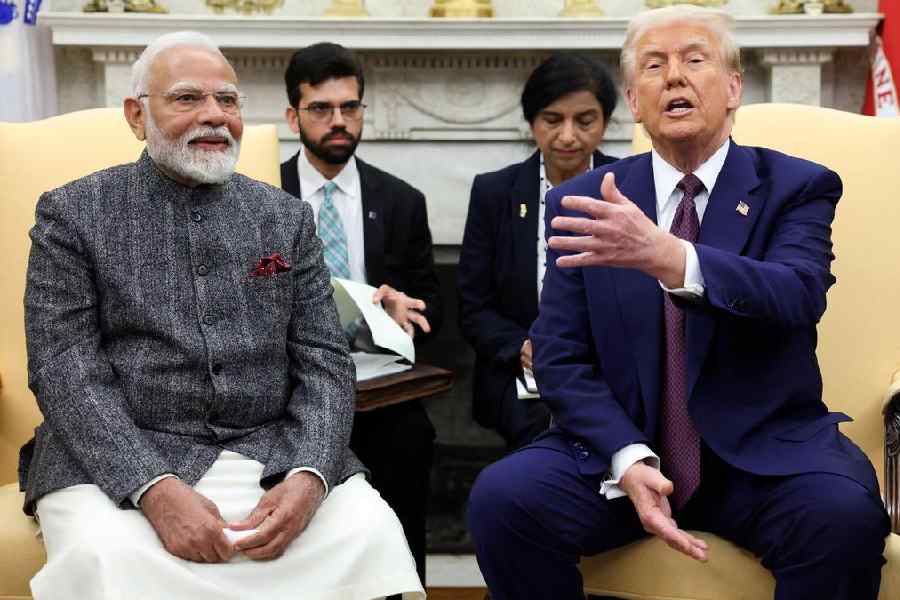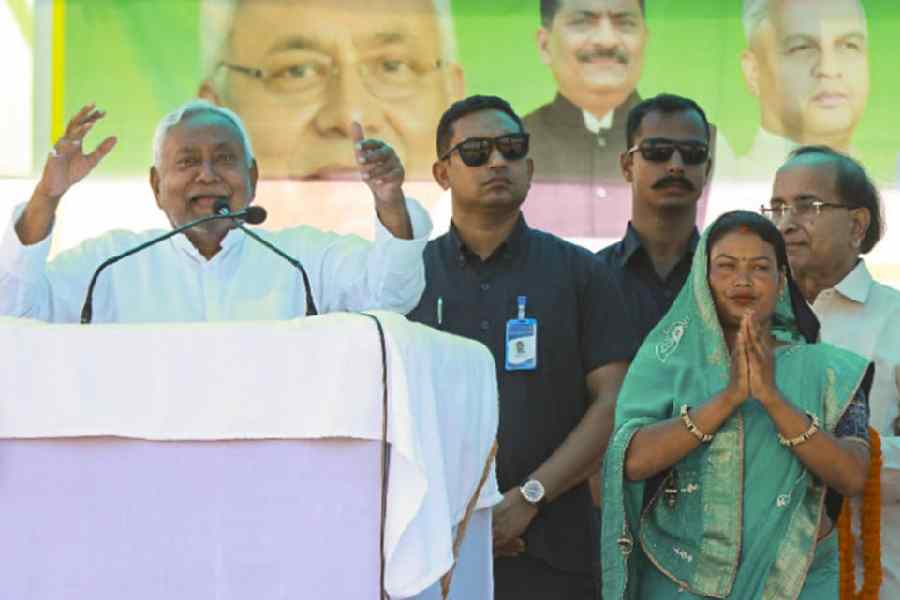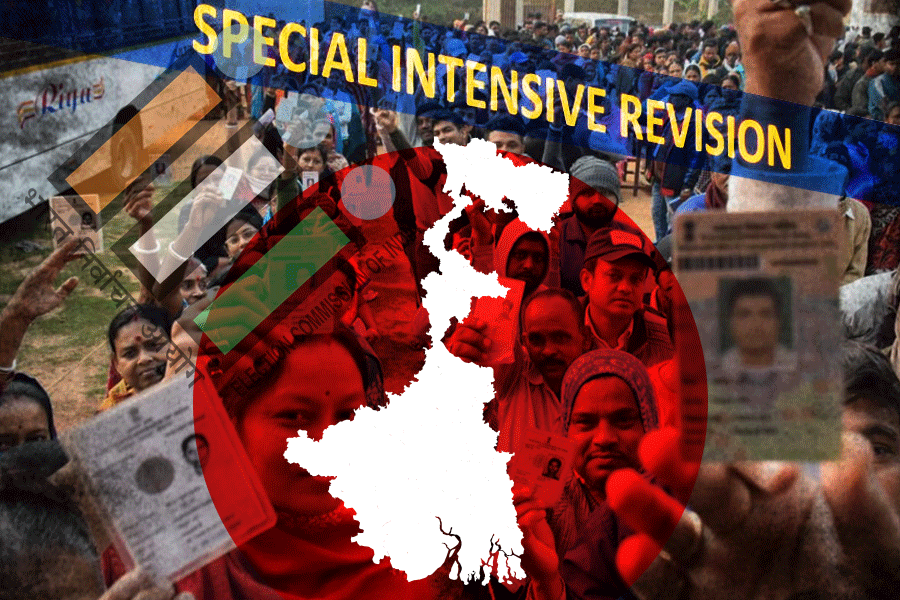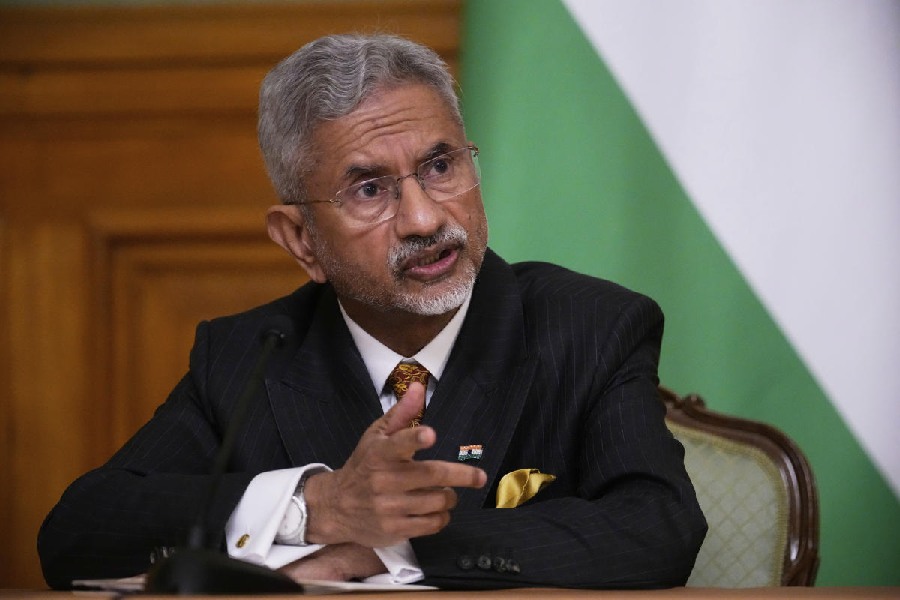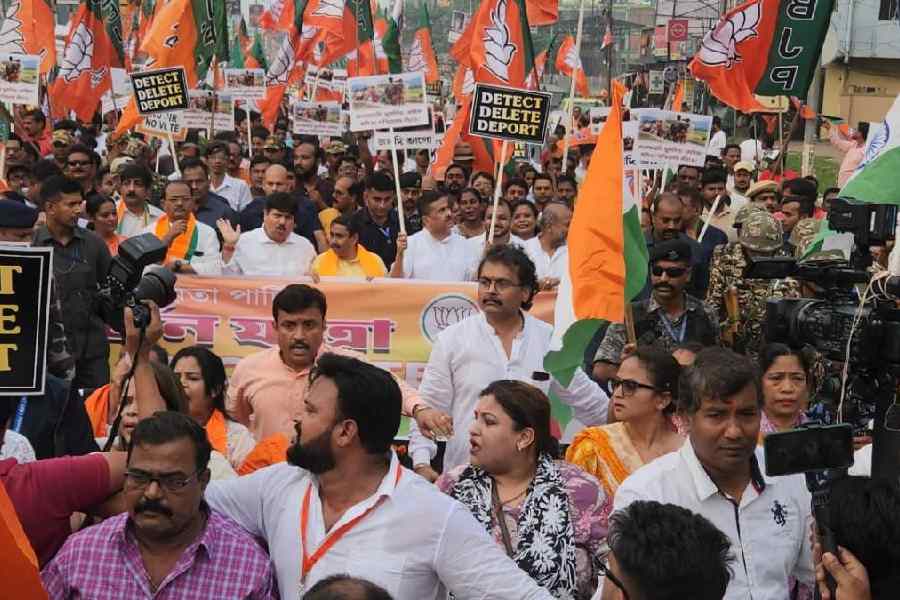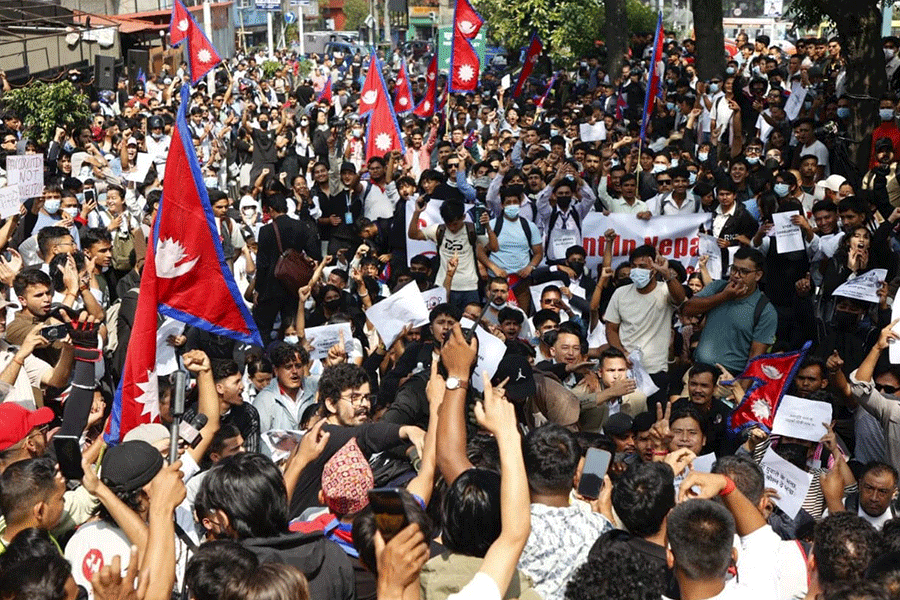 |
Bhubaneswar, Feb. 5: Jatra is big business. Call them loud and crass but the masters of ham acting are raking in the moolah.
With an approximate annual revenue of Rs 50 crore, the mobile theatre industry in the state is in a flourishing phase and giving the Odia film fraternity a serious run for its money, five times over.
The season having set in, at least a dozen jatra troupes have pitched their tents in the foothills of Khandagiri. “Tickets are selling like hot cakes,” said Tutu of the Bagha Jatin Lokanatya, a participating group.
“Jatra has started being accepted in growing cities such as Bhubaneswar, which house people of various socio-economic backgrounds,” he said.
Apart from being a big source of entertainment, jatra has also emerged as an alluring career option for many. “Odisha has more than 30 mobile theatre groups, employing over 60,000 people. The successful ones are even performing outside the state in places such as Calcutta and Surat, which have sizeable pockets of Odia-speaking people,” said Baishnab Charan Mohanty, 76, who owned the Janata, Samrat and Sonali Gananatya groups from 1973 to 1996.
Ask Daitari Panda, the immensely popular villain of the jatra world, who has scripted a rags-to-riches story. Born into a poor Brahmin family at a village in Bhadrak, Panda was forced to drop out of school after completing standard VII and help his father in farming.
“I started taking part in village jatras to supplement my family’s income. Gradually, it became my passion. It didn’t pay much then, but jatra saw a resurgence-of-sorts in the mid-90s and we started getting paid well. Probably, I would not have earned as much if I would have had a white-collared job,” said Panda, who has been in this field for more than three decades and is a part of the Konark troupe.
The mid-90s heralded a new era for jatra, an exclusively male preserve both in terms of actors and audience. Big money and change in social mores brought about a significant transformation as far as participation of women was concerned. Today, such is the lure of jatra that there are instances of young girls running away from home to be a part of this industry.
The social acceptability of jatra actresses may have increased to a considerable extent over the years, but there is still a stigma attached to them, making it difficult to find a life partner outside the arena of jatra. “Society looks down on women in showbiz. So, most of us get married within the fraternity,” said Tiki, an actress.
Though several jatra actors are flooded with film offers, they are reluctant to consider any of them. “There is also name and fame in films, but the money in jatra is way better,” said Lokanath Lenka, another well-known actor.
So, what are the magic figures that keep folk theatre stars from switching over to films? “Male and female actors in the lead role get about Rs 2 lakh to Rs 5 lakh per annum while villains are paid much more, ranging between Rs 5 lakh to Rs 8 lakh. Other actors and comedians get Rs 1 lakh to Rs 2 lakh, and child artistes make Rs 25,000 a year. Most of them demand 70 per cent of the amount as advance payment,” Mohanty said, adding, “if not more, they definitely earn as much as their counterparts in the film industry”.
Film personalities such as Sidhant Mohapatra, Bijoy Mohanty, Mihir Das, Jina and Pappu Pom Pom among others, are often seen doing cameo roles in jatras, which generally start at 11pm and go on till daybreak. Sources said they were paid anywhere between Rs 10,000 to Rs 1 lakh for the blink-and-miss appearances.
The proprietor of a popular jatra troupe in Odisha said the yearly turnover of the Odia film industry was Rs 10 crore — one-fifth of what the jatra industry generates. “The price of a movie ticket starts from Rs 20 while a jatra ticket costs Rs 50, but draws more people,” he said.
Jatra may be a money-spinner, but its appeal lies in the themes of the plays that the troupes run, sometimes for days together. The predominant themes still continue to reflect on the current socio-political reality, but titles sometimes can be deliberately misleading.
“Plays with names such as Bed Partner, Mun Naveen babu nka stree (I am Naveen (Patnaik) babu’s wife) and Yeh Munni badnaam hui may not necessarily be risqué as the titles suggest. This, actually, is more of a sales strategy,” said a troupe owner.
There are other sale gimmicks, too. A leading jatra group, during its weeklong show at Rupali Square here last December, tried to woo people by introducing a lucky draw contest in which a motorcycle worth Rs 60,000 could be won every night. But, there was a catch to it: the standard ticket price of Rs 50 saw a sharp hike of Rs 30. “People did not mind shelling out a few extra bucks with the hope of winning the motorcycle while the organisers happily made profits,” said a source close to the group.
The troupes use many such strategies to prop up their business. “We intentionally close down our ticket counters early. So, when 20 people go back empty-handed, they tell at least 100 others about the mad sale of tickets. The next day, they come for advance booking, breaking the previous day’s sale records,” said the manager of a jatra group.
And when a particular play fails to attract crowd, the organisers, instead of withdrawing it, run it for three to four consecutive days, even though they incur losses. “When the same banner is put up day after day, people are intrigued. They tend to believe the play is continuously being run because of popular demand and they come to watch it,” he said.
On an average, the annual expenditure of a troupe was around Rs 1 crore, which included payment to actors and other members, costumes, transportation, food, equipment and other stuff, Mohanty said. “Payments take up the major chunk of expenses. Owners also prefer to spend more on costumes, say, about Rs 1 lakh to Rs 2 lakh, which are specially designed by tailors in Jajpur and Haripur. Despite huge expenses, even an average group can easily make a profit of at least Rs 30 lakh to Rs 50 lakh a year,” he said.
If the return is so high, why did Tarpur, Radhanga and Uttarakul jatra groups, despite running successfully for over 30 years, close down? “Either the owner died and there was none to manage it or, the successors lacked management skills. I had to sell three of my groups to different proprietors 15 years ago, because it was taking a toll on my health. But, rarely has it happened that a troupe closed down because of financial loss,” said Mohanty.


